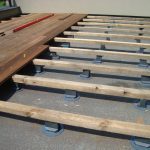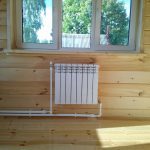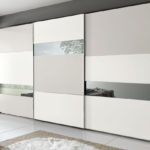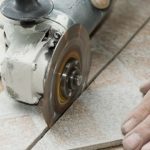Towel dryers are efficient appliances that are installed in bathrooms to provide more comfortable living conditions. They allow you to dry towels and things, as well as maintain the optimal level of humidity in the room.
The installation or replacement of devices is recommended to be trusted by professionals, because ignorance of the main nuances can become the cause of poor-quality installation, equipment failure due to blockage or emergency situations.

Many people know firsthand that heated towel rails cannot be installed in the winter season, but why not everyone knows why there is such a ban. During the heating season, you cannot replace the water-type heated towel rails, which work by connecting to a centralized heating system. Due to the connection, a breakthrough may occur, as a result of which flooding will occur.
Dismantling the heated towel rail
Before dismantling it is necessary to make sure that all water from the pipes of the heating system is drained. To do this, contact the utilities and ask to block the riser in the house. In winter, such permission will not be given.

If the structure is connected to the pipes of the heating system using threaded fasteners, it can be dismantled with your own hands without special tools. If the heated towel rail is welded, then the output will be the use of a saw - a grinder.
If necessary, cut the pipe with a grinder, it is worth remembering that it will subsequently need to be threaded. To do this, leave a sufficient length of the plot. When performing work, it is strongly recommended to use third-party help, because cutting with a grinder for metal implies the occurrence of potentially dangerous conditions.

Installation of a heated towel rail
After installing a new appliance, all joints must be carefully sealed to avoid possible leakage. To make sure the tightness, the heated towel rail must be filled with water and check the joints. It is necessary to start up the water in the “coil” gradually, because otherwise it is possible to provoke the occurrence of a water hammer.

For subsequent maintenance of the device, you can install a special device - a bypass. This element will allow you to independently block the flow of water into the "coil" in the event of leakage. At the same time, the common riser will not be blocked, and therefore the repair will not cause discomfort to other residents of the house.
-
 When an adjustable floor is more profitable than a capital screed
When an adjustable floor is more profitable than a capital screed
-
 What mistakes are made when the radiator is connected diagonally?
What mistakes are made when the radiator is connected diagonally?
-
 What are the consequences of building a site without permission?
What are the consequences of building a site without permission?
-
 What errors lead to water hammer in the heating system and how to avoid them
What errors lead to water hammer in the heating system and how to avoid them
-
 Why does the grinder work, but the disk does not spin
Why does the grinder work, but the disk does not spin
-
 What could cause the cabinet door to bend
What could cause the cabinet door to bend
-
 5 reasons to change the wizard without waiting for the repair to finish
5 reasons to change the wizard without waiting for the repair to finish
-
 How to cut tiles without dust
How to cut tiles without dust
-
 How to cut a fiberboard with a flat edge with a regular grinder
How to cut a fiberboard with a flat edge with a regular grinder
-
 Why you should not put aluminum radiators on central heating
Why you should not put aluminum radiators on central heating
-
 Why you can not allow for flaws in the installation of roof nodes from corrugated board
Why you can not allow for flaws in the installation of roof nodes from corrugated board
-
 What boards can not be used for half-timbered
What boards can not be used for half-timbered
New publications are published daily on our channel in Yandex. Zen
Go to Yandex. Zen


